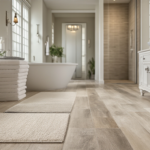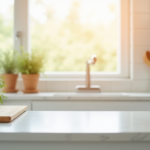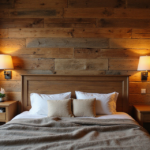Walking into a truly contemporary kitchen feels like stepping into a calm oasis where every element serves a purpose and nothing feels out of place. Yet achieving this effortless sophistication requires more than simply painting cabinets white and calling it modern. The difference between a generic “updated” kitchen and an authentically chic contemporary space lies in understanding how each design decision contributes to an overall sense of serenity and efficiency.
Contemporary kitchen style isn’t about following fleeting trends or copying magazine spreads. Instead, it’s about creating a space that embraces clean lines, thoughtful functionality, and quality materials that work together harmoniously. This approach results in kitchens that feel both timeless and thoroughly modern – spaces that support the way we actually live and cook today.
The challenge many face when pursuing this aesthetic is knowing which elements truly matter and how to implement them without creating a sterile, unwelcoming environment. Contemporary design walks a careful line between minimalism and warmth, between cutting-edge technology and timeless appeal.
In this comprehensive guide, we’ll explore 21 essential elements that define authentic contemporary kitchen style, from foundational design principles to finishing touches that make the difference between good and exceptional. Each element builds upon the others to create spaces that are as beautiful as they are functional.
1. Establish Clean Lines Through Handleless Cabinet Design
The foundation of any contemporary kitchen style begins with cabinetry that embraces uninterrupted surfaces and geometric precision. Handleless cabinet design eliminates the visual noise created by traditional hardware, allowing the eye to appreciate the pure form and quality of materials without distraction. This approach creates an almost furniture-like quality that feels both sophisticated and calming.
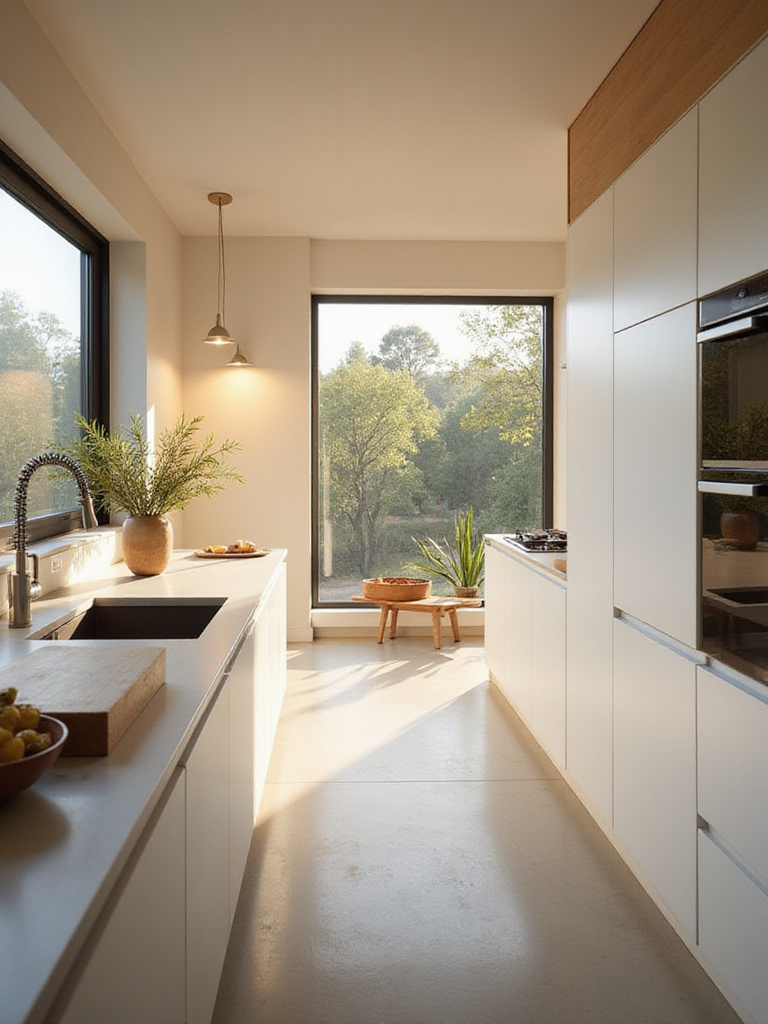
When cabinets feature integrated pulls, push-to-open mechanisms, or recessed channels instead of protruding handles, the result is a seamless wall of storage that maximizes the perception of space. The absence of hardware also simplifies daily cleaning – there are no crevices for dust to accumulate or handles to wipe around. More importantly, this design choice allows other elements like countertops, backsplashes, or statement lighting to become the focal points they’re meant to be.
What makes this design special is the way it transforms storage from a purely functional necessity into an architectural element that contributes to the room’s overall sense of calm and order.
2. Select Large-Format Materials for Visual Continuity
Contemporary kitchen style thrives on creating expansive, unbroken surfaces that make spaces feel larger and more serene. Large-format tiles, slabs, and panels minimize visual interruptions from grout lines and seams, resulting in surfaces that read as single, monolithic elements rather than collections of smaller pieces. This choice particularly impacts backsplashes and flooring, where traditional smaller tiles can create busy patterns that compete with the clean aesthetic.
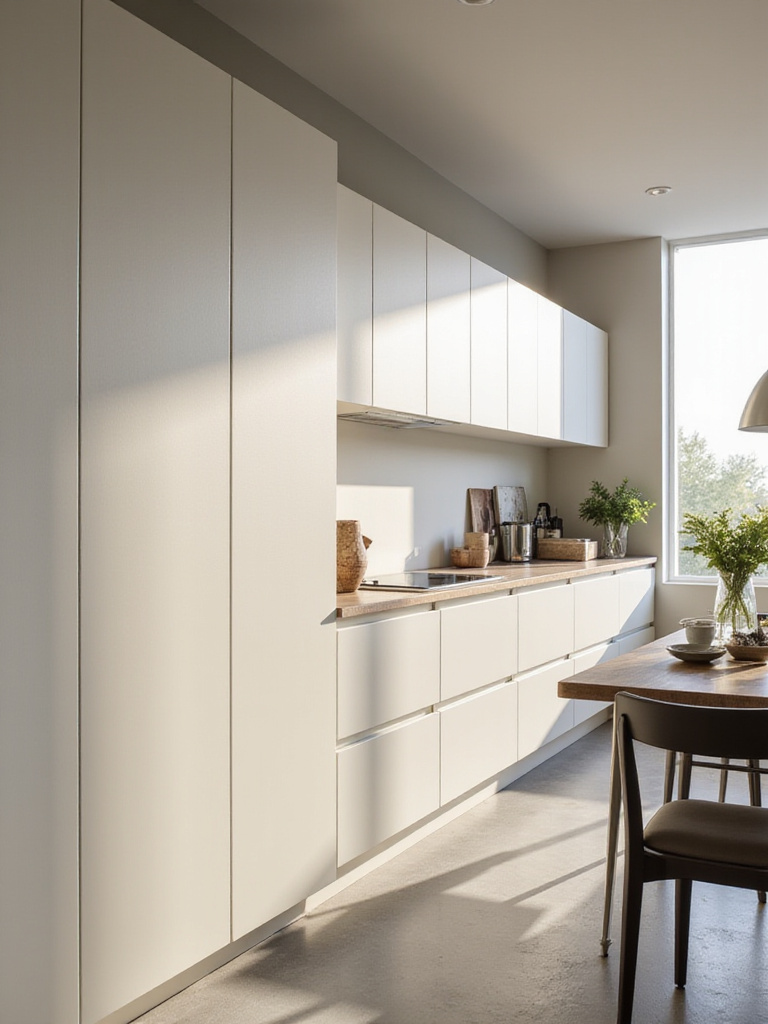
The practical benefits extend beyond aesthetics – fewer grout lines mean significantly less maintenance, as these joints are typically where stains and bacteria accumulate. Large-format porcelain tiles, for instance, can span entire walls with minimal seams, creating backdrop surfaces that feel more like architectural elements than applied finishes. When selecting these materials, the key is ensuring proper installation with leveling systems that prevent any lippage between adjacent pieces.
The magic of this design element lies in its subtlety – visitors often can’t pinpoint why a space feels so calm and sophisticated, but the continuous surfaces created by large-format materials are frequently the underlying reason.
3. Integrate Appliances Behind Matching Cabinet Panels
Nothing disrupts the serene flow of contemporary kitchen style quite like a collection of mismatched appliance fronts creating visual chaos along the walls. Integrated appliances, where refrigerators, dishwashers, and even wine coolers disappear behind panels that match the surrounding cabinetry, create the illusion of a continuous furniture piece rather than a collection of individual machines. This approach transforms the kitchen from feeling like a utilitarian workspace into a sophisticated living environment.
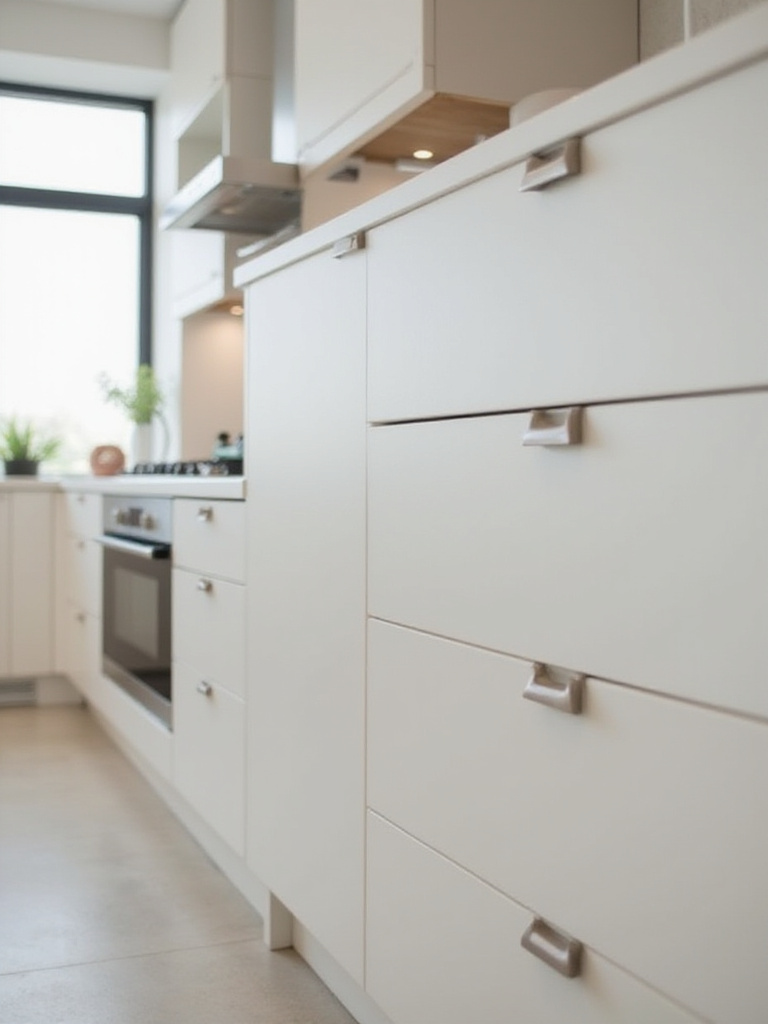
The process requires careful coordination between appliance specifications and cabinet manufacturing, as panel-ready models need precise measurements for proper fit and function. While the initial investment may be higher than standard appliances, the result is a kitchen that feels custom and thoughtfully designed rather than assembled from disparate components. The seamless integration also allows the quality of your chosen cabinet materials and finishes to take center stage.
Professional stylists approach this by first selecting appliances with the right dimensions and panel-ready capabilities, then working with cabinet makers to ensure perfect alignment and smooth operation.
4. Choose Quartz Countertops for Seamless Durability
The countertop material you select sets the tone for your entire contemporary kitchen style, and engineered quartz offers the perfect combination of visual continuity and practical performance. Unlike natural stone, quartz can be fabricated with nearly invisible seams, creating expansive work surfaces that read as single, uninterrupted planes. The non-porous surface resists staining and bacterial growth without requiring periodic sealing, maintaining its pristine appearance with simple daily cleaning.

What distinguishes quartz in contemporary applications is its ability to achieve consistent color and pattern throughout large installations. Whether you choose pure white, subtle veining, or bold geometric patterns, the material maintains uniformity that supports the clean, controlled aesthetic. The engineering process also allows for integrated sinks and waterfall edges that create seamless transitions between horizontal and vertical surfaces.
The visual weight balances perfectly when you pair quartz’s refined consistency with natural materials like wood or stone in other areas, creating contrast without competition.
5. Install Under-Cabinet LED Lighting for Task Precision
Proper task lighting transforms both the functionality and atmosphere of contemporary kitchen style, and under-cabinet LED strips provide focused illumination exactly where you need it most. These slim fixtures disappear beneath wall cabinets, casting even light across work surfaces while highlighting the texture and color of backsplash materials. The result is both practical – eliminating shadows that make food preparation difficult – and aesthetic, creating a gentle glow that adds warmth to clean-lined spaces.
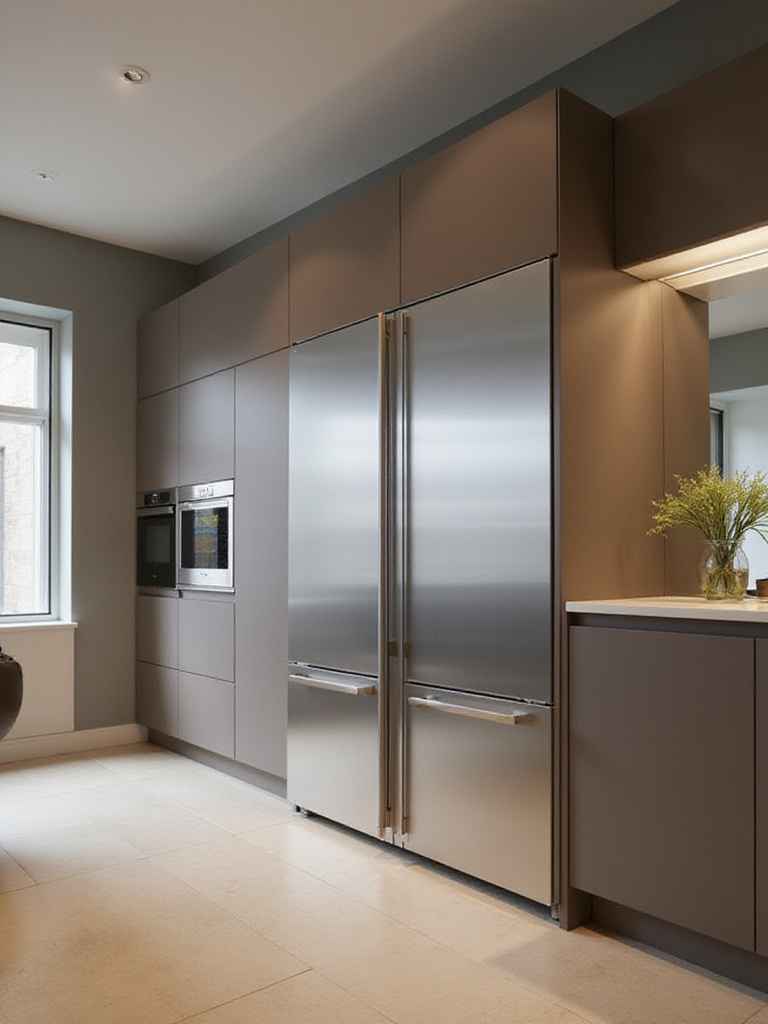
Modern LED technology allows for dimming capabilities that transition the kitchen from bright workspace during meal preparation to ambient lighting for evening entertaining. The color temperature can be selected to complement your overall design scheme, with warmer tones (2700K-3000K) adding coziness and cooler temperatures (3500K-4000K) providing crisp, restaurant-quality illumination. Installation planning should happen during the electrical rough-in phase to hide all wiring within the cabinet structure.
The finishing touch that elevates the entire look comes from selecting fixtures with diffusion lenses that eliminate hot spots and create perfectly even light distribution.
6. Embrace Neutral Color Palettes with Strategic Accents
Contemporary kitchen style relies on a foundation of neutral colors that create a sense of spaciousness and timeless appeal, but the key lies in layering different tones and textures within that restrained palette. Pure white, warm grays, and soft beiges provide the backdrop that allows architectural elements and material quality to shine, while strategic use of deeper neutrals like charcoal or black adds necessary contrast and grounding. This approach creates sophistication without the risk of color choices becoming dated.
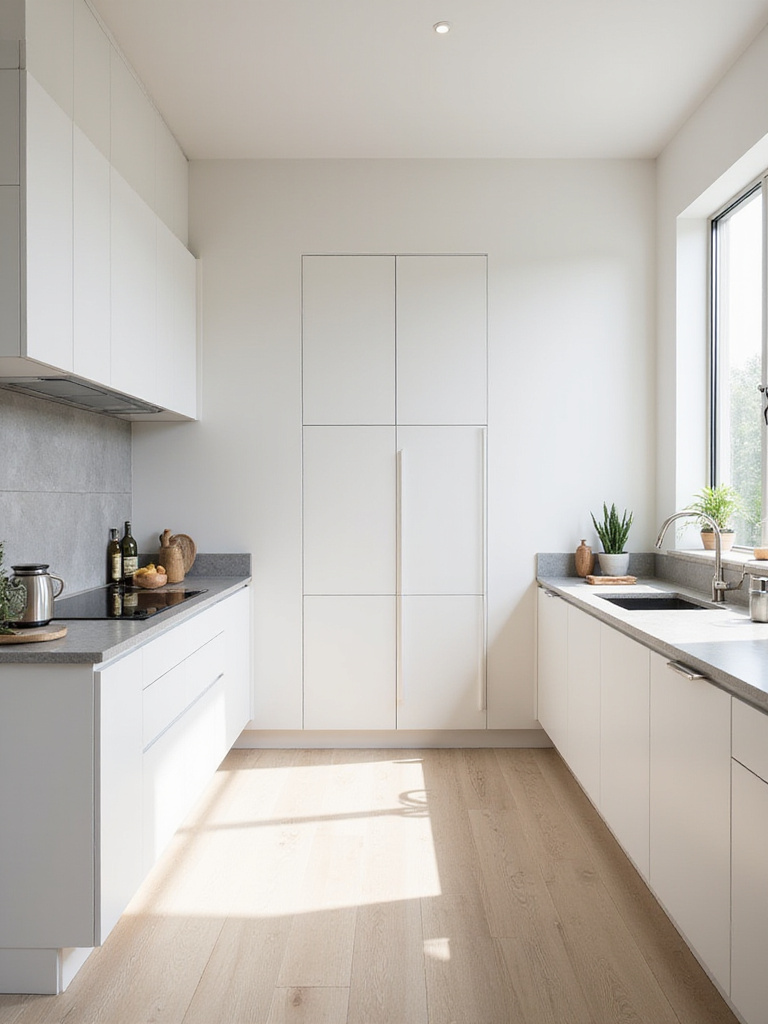
The magic happens in the subtle variations – perhaps matte white cabinets paired with a warm gray backsplash and cream-toned countertops, each element distinct enough to create visual interest while maintaining overall harmony. Accent colors, when used at all, should appear in easily changeable elements like bar stools, small appliances, or artwork rather than permanent fixtures. This restraint allows you to update the space’s personality seasonally without major renovation.
The unexpected pairing that always works is combining different finishes within the same color family – matte and glossy whites, for instance, or brushed and polished metals in similar tones.
7. Select Minimalist Hardware in Consistent Finishes
The hardware you choose for your contemporary kitchen style should enhance rather than compete with the overall design, serving as subtle jewelry that adds refinement without drawing attention to itself. Sleek bar pulls, geometric knobs, or integrated finger pulls in consistent finishes create visual cohesion across all cabinetry and drawers. The key is selecting pieces with clean lines and substantial feel that communicate quality through their weight and finish rather than ornate details.
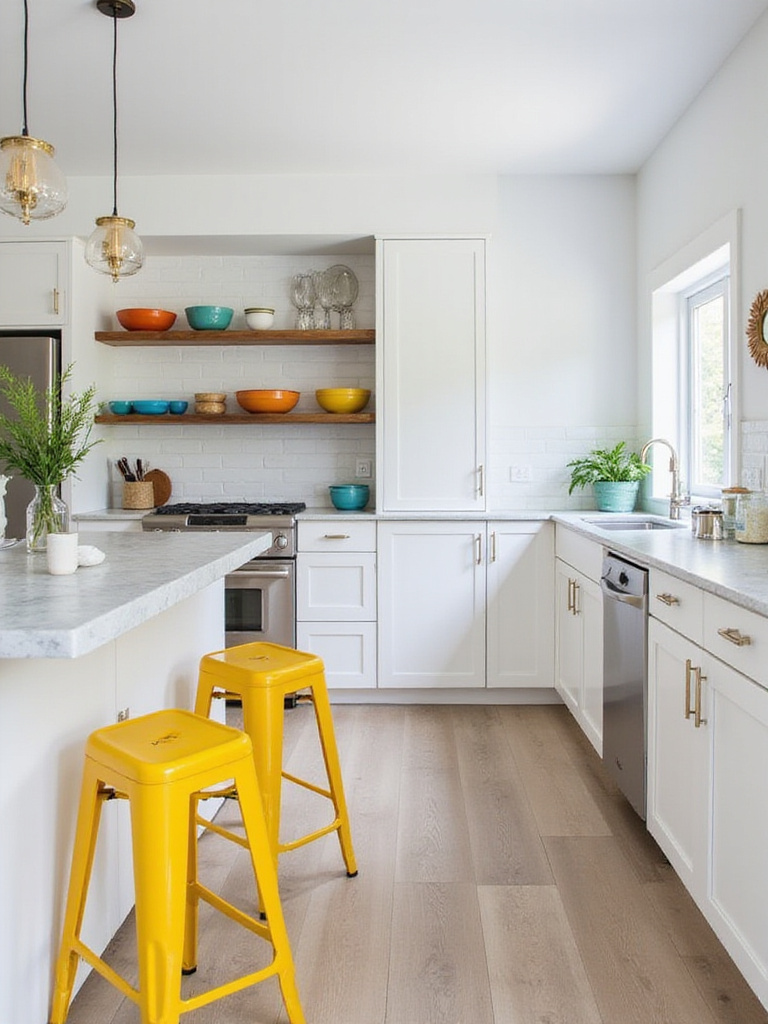
Finish consistency extends beyond just cabinet hardware to include faucets, lighting fixtures, and even small appliances when possible. Brushed stainless steel, matte black, or warm brass can each work beautifully in contemporary settings, but mixing multiple metal finishes requires careful consideration to avoid a disjointed appearance. The scale of hardware should also relate to the cabinet size – oversized pulls on small drawers or tiny knobs on large doors disrupt the proportional harmony essential to the style.
Beyond the obvious placement, consider using hardware as an opportunity to introduce subtle geometric patterns or linear elements that reinforce the clean-lined aesthetic throughout the space.
8. Create Open Shelving for Display and Accessibility
Strategic open shelving in contemporary kitchen style serves both functional and aesthetic purposes, providing easily accessible storage for frequently used items while creating opportunities to display beautiful dishware, glassware, or small plants. The key is maintaining the same clean lines and minimal aesthetic as the rest of the kitchen – floating shelves with hidden brackets or sleek metal supports that don’t compete with the items they hold. This approach breaks up expanses of closed cabinetry while maintaining the uncluttered feel essential to the style.
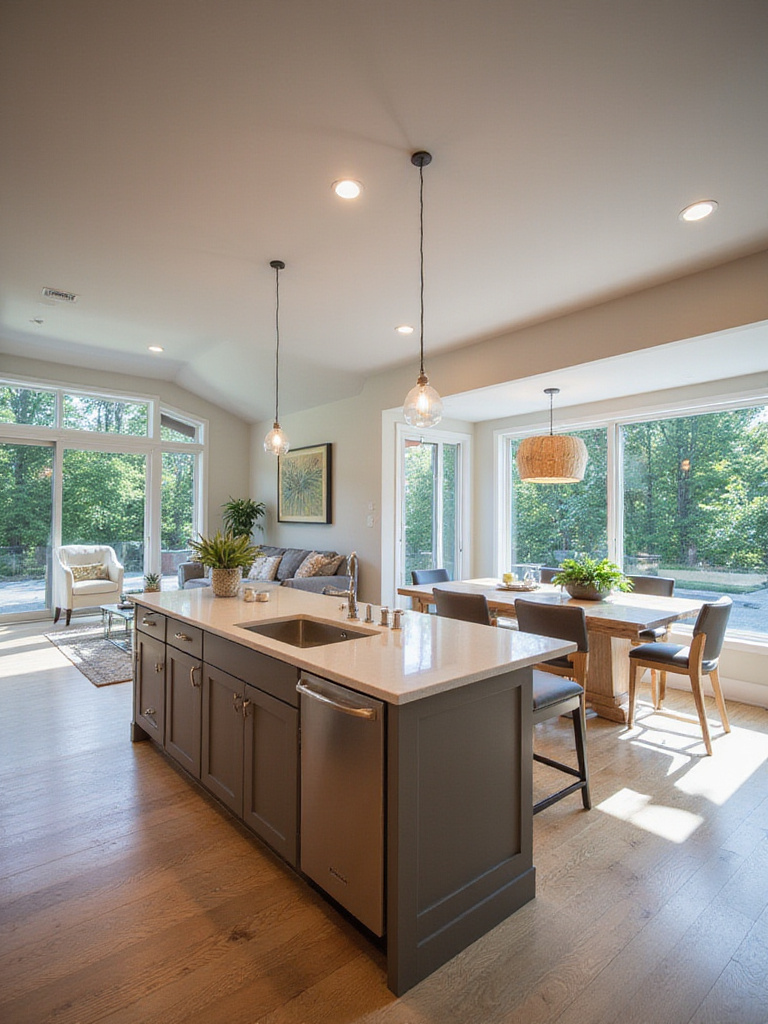
The success of open shelving depends entirely on thoughtful curation and consistent maintenance. Items should be both beautiful and functional, arranged with plenty of breathing room between pieces to avoid a cluttered appearance. Consider grouping items by color, material, or function to create visual cohesion, and resist the temptation to fill every inch of shelf space. The negative space is as important as the objects themselves in maintaining the serene aesthetic.
The styling mistake most people make is treating open shelves like closed cabinets – cramming them full of mismatched items rather than using them as opportunities to showcase carefully chosen pieces.
9. Install a Statement Range Hood as Architectural Element
The range hood in a contemporary kitchen style should function as both a practical necessity and an architectural focal point that reinforces the clean, geometric aesthetic. Whether you choose a sleek stainless steel canopy, a minimalist glass design, or a custom wood-clad version that matches your cabinetry, the hood should feel like an intentional design element rather than an afterthought. The scale and proportion should relate to both the cooking surface below and the overall kitchen dimensions.
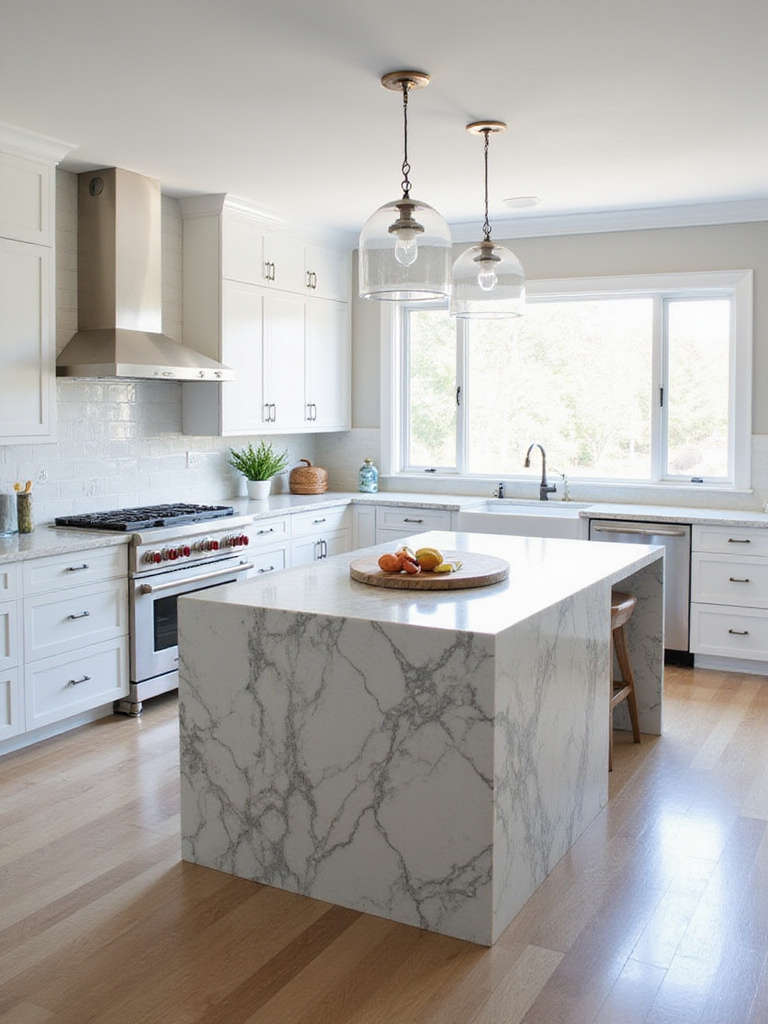
Modern range hoods offer powerful ventilation capabilities in increasingly streamlined packages, with options for ceiling-mounted units that seem to float above islands or integrated models that disappear entirely into the cabinetry. The key is balancing visual impact with practical performance – ensuring adequate CFM ratings for your cooking style while maintaining the quiet operation essential for open-plan living. Professional-grade internal blowers can provide restaurant-quality ventilation while keeping noise levels comfortable for conversation.
The composition comes together when you consider the hood as part of the overall lighting scheme, incorporating LED strips or spotlights that provide additional task lighting while highlighting the architectural form.
10. Choose Flat-Panel Cabinet Doors for Seamless Surfaces
Flat-panel cabinet doors, also known as slab doors, are fundamental to achieving authentic contemporary kitchen style through their completely smooth, unadorned surfaces. These doors eliminate the visual complexity of raised panels, beveled edges, or frame-and-panel construction, creating seamless expanses that allow material quality and color to take center stage. The simplicity of form makes them incredibly versatile, working equally well with high-gloss lacquer, natural wood veneer, or textured laminate finishes.

The manufacturing precision required for quality flat-panel doors is considerable – any imperfections in the surface or edge banding become immediately apparent without decorative details to hide behind. This demand for perfection actually elevates the overall quality of the kitchen, as every component must meet higher standards. The doors also provide a neutral backdrop that allows other design elements like unique countertops, statement lighting, or architectural details to command attention without visual competition.
What surprises clients most is how this works with both warm and cool material palettes, adapting to various design directions while maintaining the essential contemporary character.
11. Incorporate Natural Wood Elements for Warmth
While contemporary kitchen style embraces clean lines and modern materials, incorporating natural wood elements prevents the space from feeling cold or institutional. Wood introduces organic texture, warmth, and visual interest that balances the harder surfaces typically found in contemporary designs. Whether used for an island base, accent cabinetry, open shelving, or even ceiling beams, wood adds a human scale and tactile quality that makes the kitchen feel more inviting and livable.
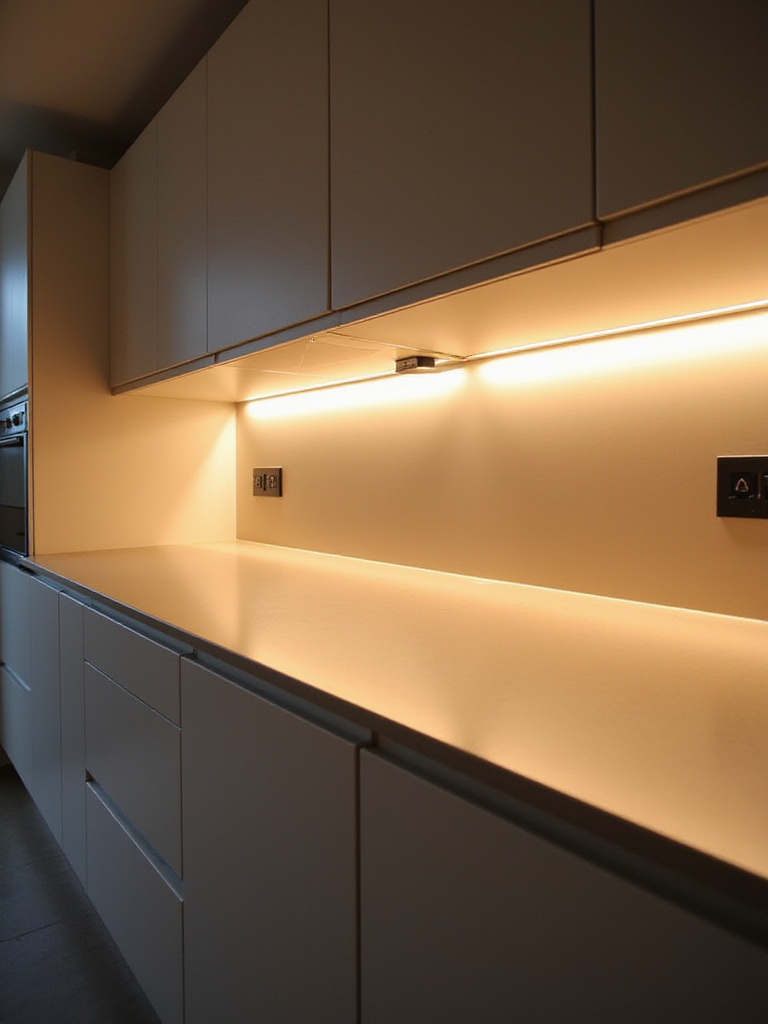
The key is selecting wood species and finishes that complement rather than compete with the overall aesthetic. Rift-sawn oak, walnut with clean grain patterns, or even reclaimed wood with subtle character can work beautifully when finished to highlight the natural beauty without excessive rustic detailing. The wood elements should feel intentional and integrated rather than added as an afterthought, contributing to the overall design narrative while maintaining the sophisticated feel.
The artisans’ commitment to sustainable practices means many contemporary wood elements now come from responsibly managed forests, allowing you to add natural beauty while supporting environmental stewardship.
12. Select Undermount Sinks for Clean Countertop Lines
An undermount sink installation is essential for maintaining the seamless countertop lines that define contemporary kitchen style, eliminating the rim and caulk lines that disrupt visual flow in drop-in models. This mounting method allows you to wipe debris directly from the counter into the sink without obstruction, making cleanup more efficient while maintaining the clean aesthetic. The continuous counter edge also maximizes usable workspace around the sink area.
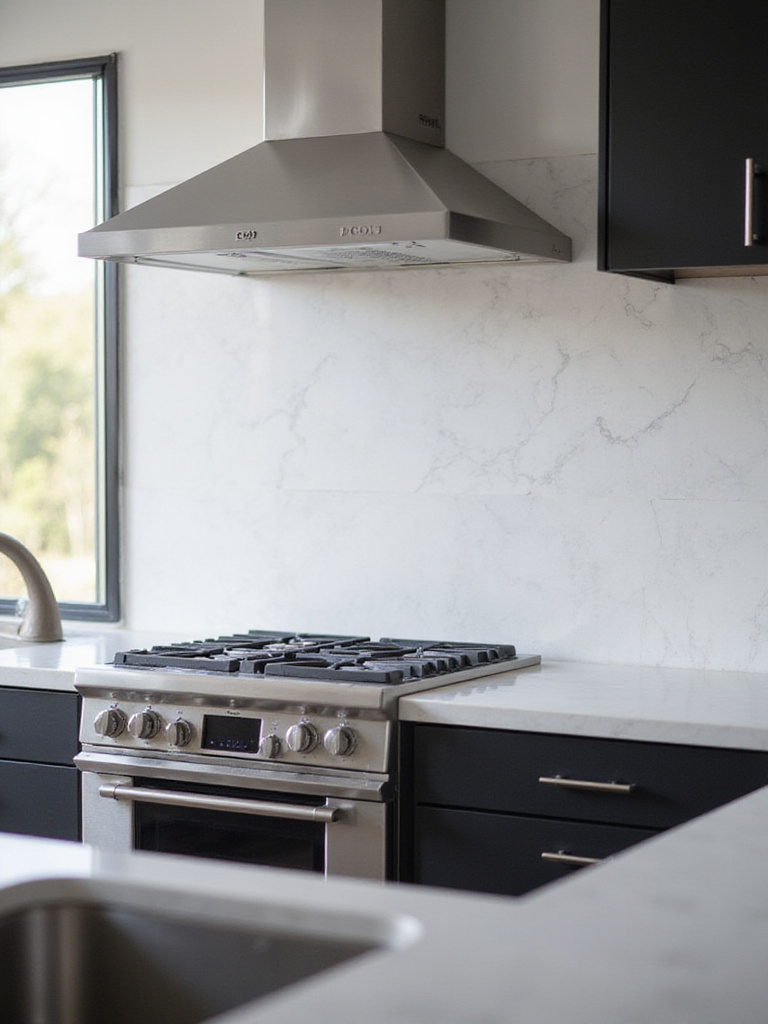
The installation requires countertop materials that can support the sink weight and provide a finished edge – natural stone, quartz, and solid surface materials work perfectly, while laminate presents challenges. Stainless steel undermount sinks offer durability and easy maintenance, while composite granite models can be color-matched to countertops for an even more seamless appearance. The key is ensuring professional installation with proper support and waterproof sealing to prevent long-term issues.
The quality becomes evident after years of use when the clean lines remain intact and the ease of maintenance continues to save time during daily kitchen cleanup routines.
13. Install Large-Format Backsplash Tiles for Visual Calm
The backsplash in a contemporary kitchen style should provide a serene backdrop rather than busy visual competition, and large-format tiles achieve this through minimal grout lines and expansive surfaces. Whether you choose 12×24 inch subway-style tiles, 24×48 inch slabs, or even full-height stone panels, the goal is creating smooth, uninterrupted surfaces that enhance rather than distract from the overall design. This approach makes the kitchen feel larger and more sophisticated while simplifying maintenance.
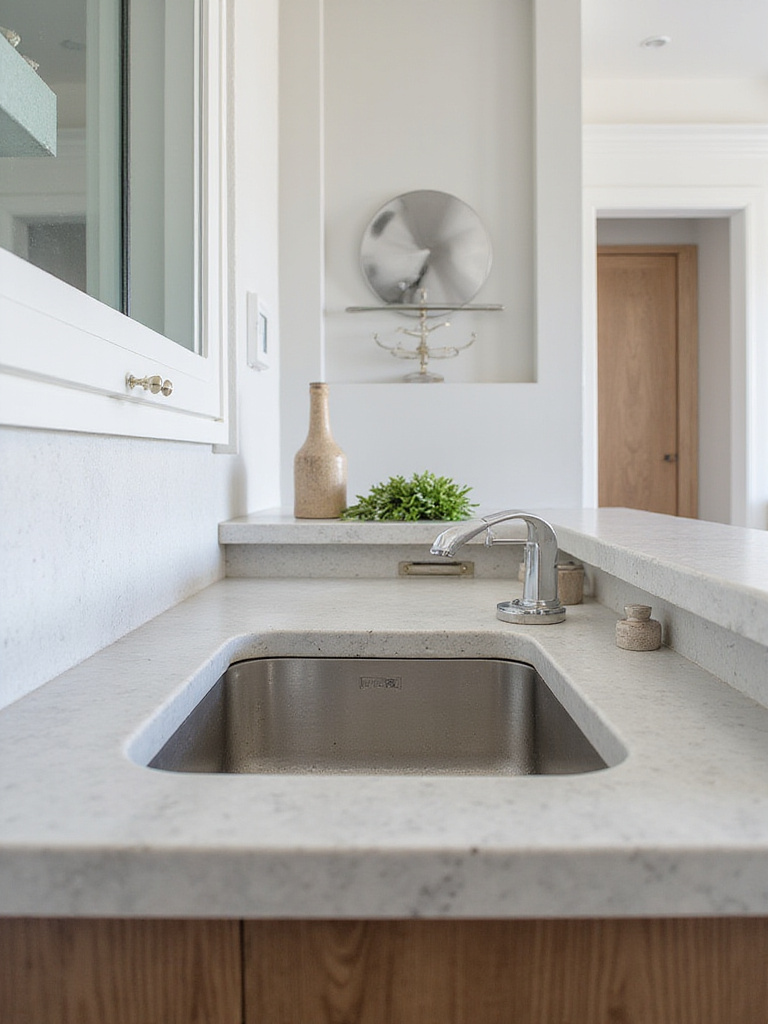
Large-format tiles work particularly well when extended from counter to ceiling, creating a monolithic wall surface that eliminates the traditional upper cabinet/backsplash/wall paint divisions. The material can match or complement the countertop for ultimate continuity, or provide subtle contrast through texture or finish variation. Rectified edges and minimal grout lines are essential for achieving the seamless look, requiring precise installation and high-quality setting materials.
The environmental story behind this choice often involves selecting porcelain tiles that offer the beauty of natural stone with enhanced durability and lower maintenance requirements.
14. Choose Professional-Grade Appliances with Clean Lines
Contemporary kitchen style demands appliances that combine superior performance with sleek, unadorned aesthetics that complement rather than dominate the space. Professional-grade ranges, refrigerators, and dishwashers now offer clean-lined designs that eliminate unnecessary decorative elements while providing restaurant-quality functionality. The key is selecting models with flat doors, minimal control panels, and consistent finishes that integrate seamlessly with the overall design scheme.
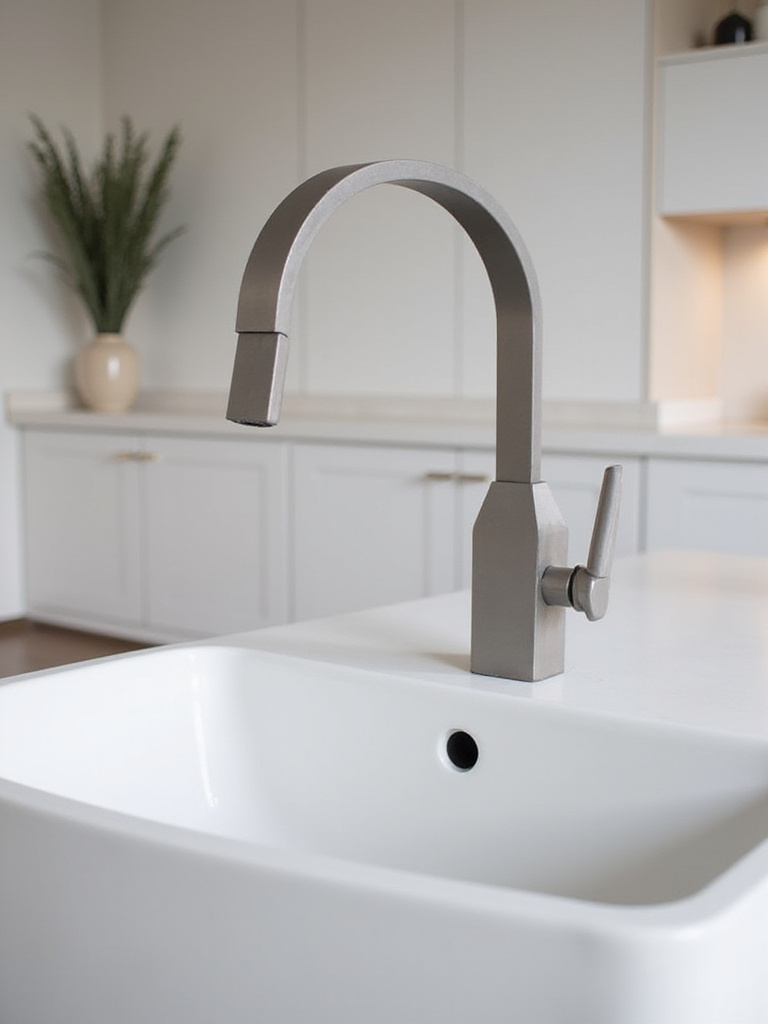
Stainless steel remains popular for its durability and professional appearance, but newer options like black stainless steel, custom panel-ready models, or even bold colors can work when carefully integrated with the surrounding materials. The important consideration is ensuring that appliance proportions relate properly to the kitchen scale – oversized commercial-style ranges can overwhelm smaller spaces, while undersized appliances may look inadequate in larger kitchens.
The traditional methods used in professional kitchen design emphasize workflow efficiency, and contemporary residential kitchens benefit from applying these same principles to create spaces that function as beautifully as they look.
15. Create Seamless Flooring Throughout Open Spaces
Flooring in contemporary kitchen style should create visual continuity throughout open-plan living areas, using consistent materials that enhance the sense of spaciousness and flow. Large-format tiles, wide-plank hardwood, or polished concrete can work beautifully when extended from kitchen through dining and living areas, eliminating visual breaks that would otherwise compartmentalize the space. This approach reinforces the open, airy feeling essential to contemporary design while simplifying maintenance across the entire area.
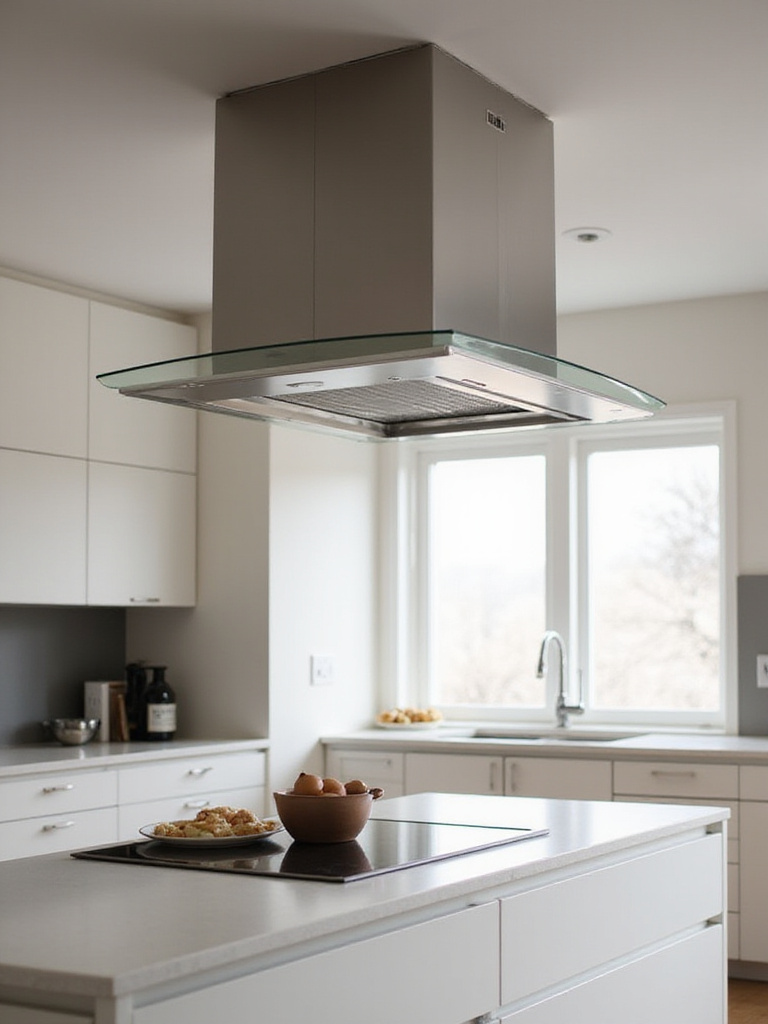
The material selection should balance aesthetic goals with practical requirements – kitchen areas need surfaces that resist moisture, stains, and heavy traffic while maintaining their appearance over time. Porcelain tiles that mimic natural materials offer excellent performance with minimal maintenance, while engineered hardwood provides warmth and character with improved stability. The key is ensuring consistent installation quality across the entire area to maintain the seamless appearance.
The subtle fragrance of natural materials like properly finished wood creates an additional sensory layer that enhances the overall experience of the space without overwhelming it.
16. Integrate Smart Technology Discreetly
Smart technology in contemporary kitchen style should enhance functionality while remaining virtually invisible, supporting the clean aesthetic rather than adding visual clutter. Built-in charging stations within drawers, pop-up outlets that disappear when not in use, and integrated smart home controls allow you to embrace modern convenience without compromising the minimalist design. The goal is creating a kitchen that works smarter while looking simpler.
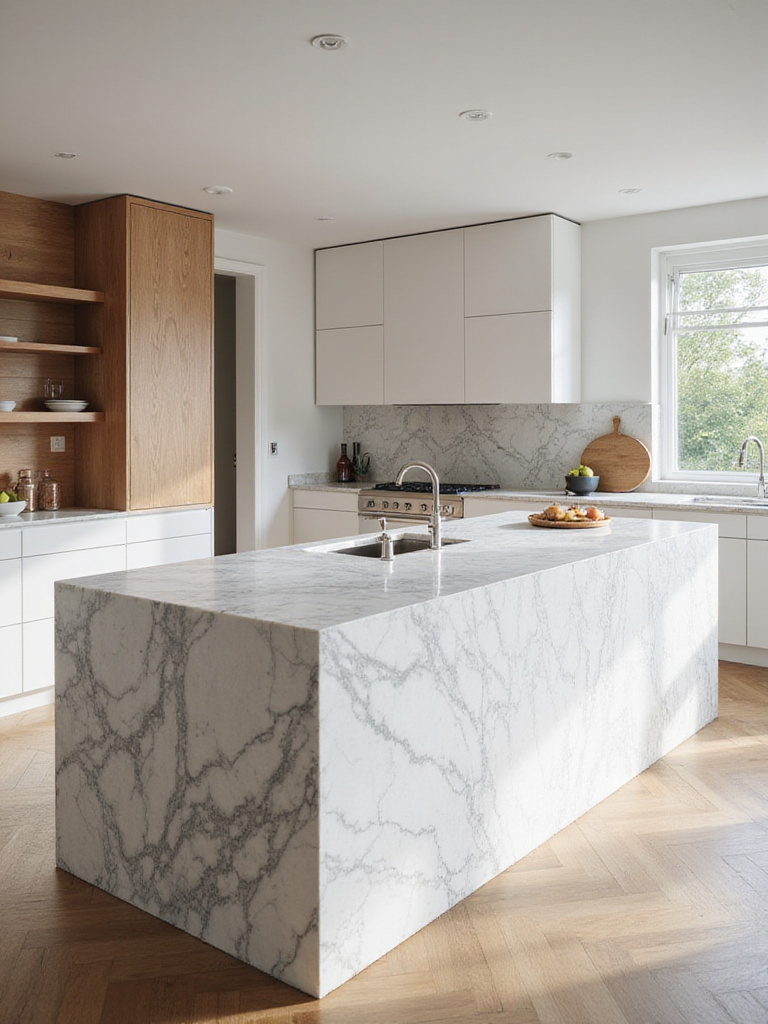
Smart appliances now offer sophisticated features like precision cooking modes, energy monitoring, and remote operation through smartphone apps, but the best models integrate these capabilities behind clean, unadorned control panels. Consider refrigerators with internal cameras accessible via mobile apps, induction cooktops with precise temperature control, or dishwashers with soil sensors that optimize cleaning cycles. The technology should solve real problems and improve daily life rather than simply adding complexity.
The sustainable journey of this technology involves selecting energy-efficient models that reduce environmental impact while providing enhanced functionality for modern living.
17. Design Ample Hidden Storage Solutions
Effective hidden storage is crucial for maintaining the uncluttered surfaces that define contemporary kitchen style, requiring thoughtful planning to ensure every item has a designated, concealed location. Deep drawers with internal organizers, pull-out pantry systems, and integrated appliance garages allow you to keep countertops completely clear while maintaining easy access to frequently used items. The key is designing storage solutions that work with your specific cooking and entertaining patterns.
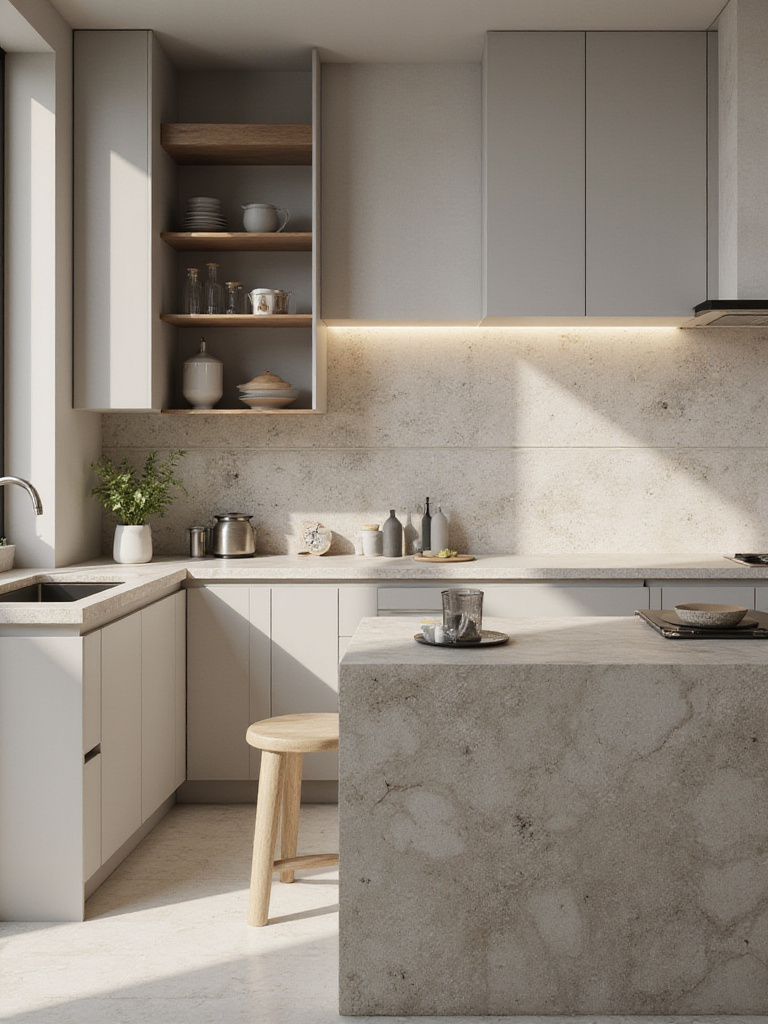
Innovative storage solutions like corner drawer systems, toe-kick drawers, and ceiling-height cabinets maximize every cubic inch of available space while maintaining the seamless appearance essential to the style. Internal lighting, soft-close mechanisms, and custom organizational inserts transform storage from basic containment into precision-engineered systems that make kitchen tasks more efficient and enjoyable.
The maker’s journey from basic cabinetry to sophisticated storage systems reflects the evolution of contemporary kitchen design toward spaces that are both beautiful and highly functional.
18. Select Consistent Color Temperature in All Lighting
Lighting color temperature significantly impacts the overall feeling of contemporary kitchen style, and maintaining consistency across all fixtures creates the cohesive, sophisticated atmosphere essential to the aesthetic. Whether you choose warm white (2700K-3000K) for a cozier feel or bright white (3500K-4000K) for crisp, gallery-like illumination, using the same color temperature in recessed lights, under-cabinet strips, and pendant fixtures ensures visual harmony throughout the space.
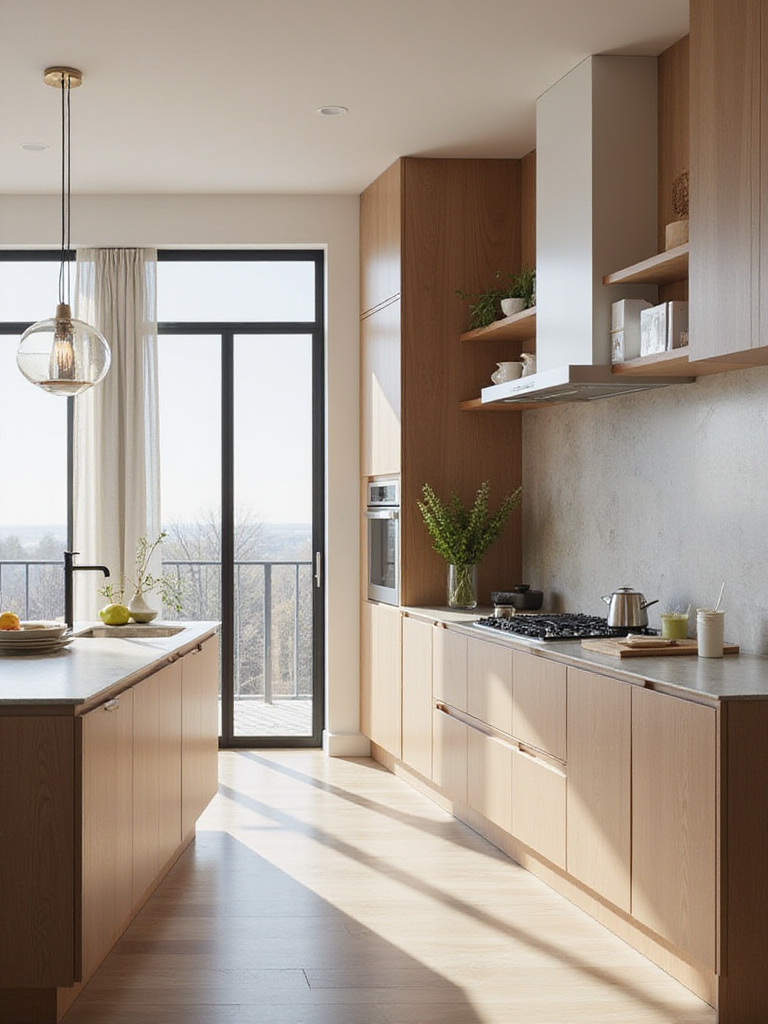
The layered lighting approach essential to contemporary design becomes more effective when all sources work together rather than competing with different color temperatures. Dimming capabilities allow you to adjust intensity for different activities while maintaining consistent color quality, transitioning from bright task lighting during food preparation to ambient lighting for entertaining. High-quality LED fixtures provide both energy efficiency and precise color control that wasn’t possible with older lighting technologies.
The evolution of this trend reflects broader cultural shifts toward spaces that can adapt to different moods and activities while maintaining their essential character and sophistication.
19. Choose Geometric Shapes in Accessories and Hardware
Geometric elements in contemporary kitchen style reinforce the clean, architectural aesthetic through carefully selected accessories and hardware that echo the linear forms fundamental to the design. Square or rectangular vessel shapes for soap dispensers, angular pendant lights, and geometric cutting boards or serving pieces contribute to the overall sense of order and intentionality. The key is selecting pieces that feel purposeful rather than decorative, maintaining the functional focus essential to contemporary design.

Hardware shapes should complement the overall geometric theme – square or rectangular pulls, cylindrical knobs, or linear handles that reinforce the clean lines found throughout the space. Even small details like cabinet hinges, drawer slides, and electrical outlet covers should maintain the same geometric sensibility to create complete design coherence. The goal is creating a space where every element feels intentionally selected and properly proportioned.
The cultural heritage preserved in geometric design principles connects contemporary kitchens to architectural traditions while expressing thoroughly modern sensibilities and lifestyle priorities.
20. Install Ceiling-Height Cabinetry for Maximum Impact
Extending cabinetry to the ceiling creates dramatic visual impact in contemporary kitchen style while maximizing storage capacity and eliminating dust-collecting spaces above shorter cabinets. This approach makes the kitchen feel more spacious and architecturally integrated, treating storage as a built-in element rather than furniture placed against walls. The unbroken vertical lines also emphasize ceiling height and create a more sophisticated, custom appearance.
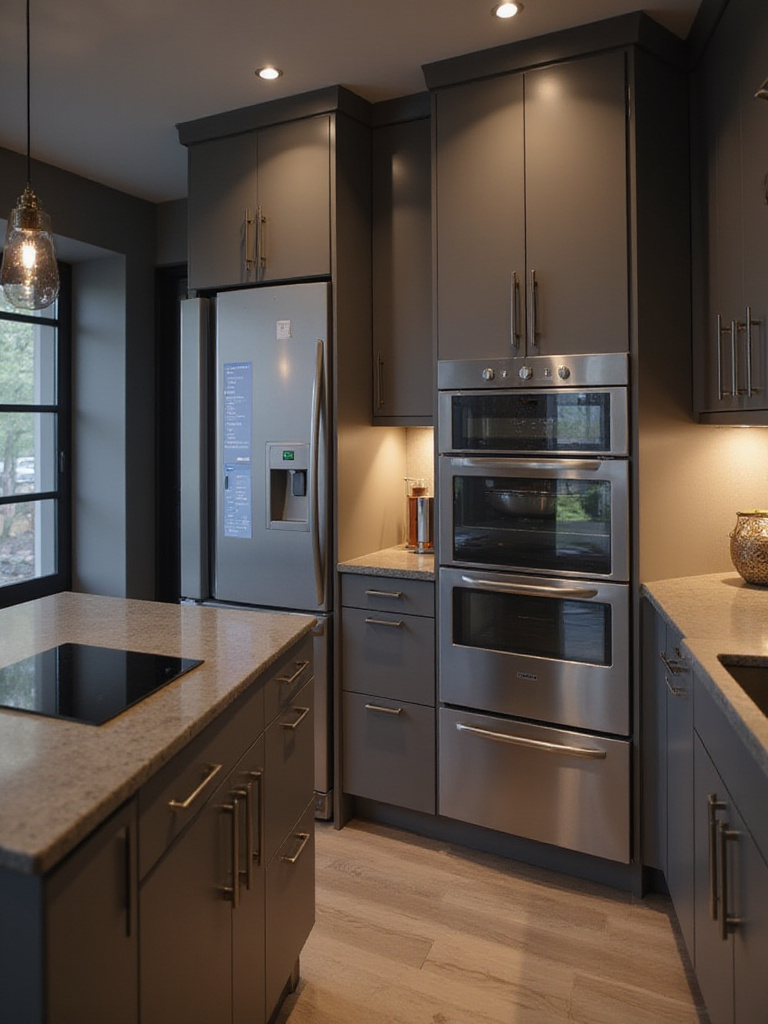
Ceiling-height installations require careful planning to ensure proper proportions and accessibility – upper cabinets may need internal step-down shelving or pull-down hardware to make high spaces functional. The visual weight of tall cabinetry should be balanced through color and finish choices, with lighter tones typically working better for upper sections. Crown molding or shadow reveals at the ceiling line can provide clean termination details that maintain the contemporary aesthetic.
The collaboration between designers and cabinet makers often results in innovative solutions for accessing high storage while maintaining the seamless appearance essential to the style.
21. Maintain Clutter-Free Surfaces Through Daily Discipline
The final element in achieving authentic contemporary kitchen style isn’t a product or installation technique – it’s the daily discipline required to maintain the clutter-free surfaces that allow the design to shine. Even the most thoughtfully planned contemporary kitchen will lose its impact if countertops become repositories for mail, small appliances, and miscellaneous items. Success requires developing systems and habits that support the aesthetic long-term.
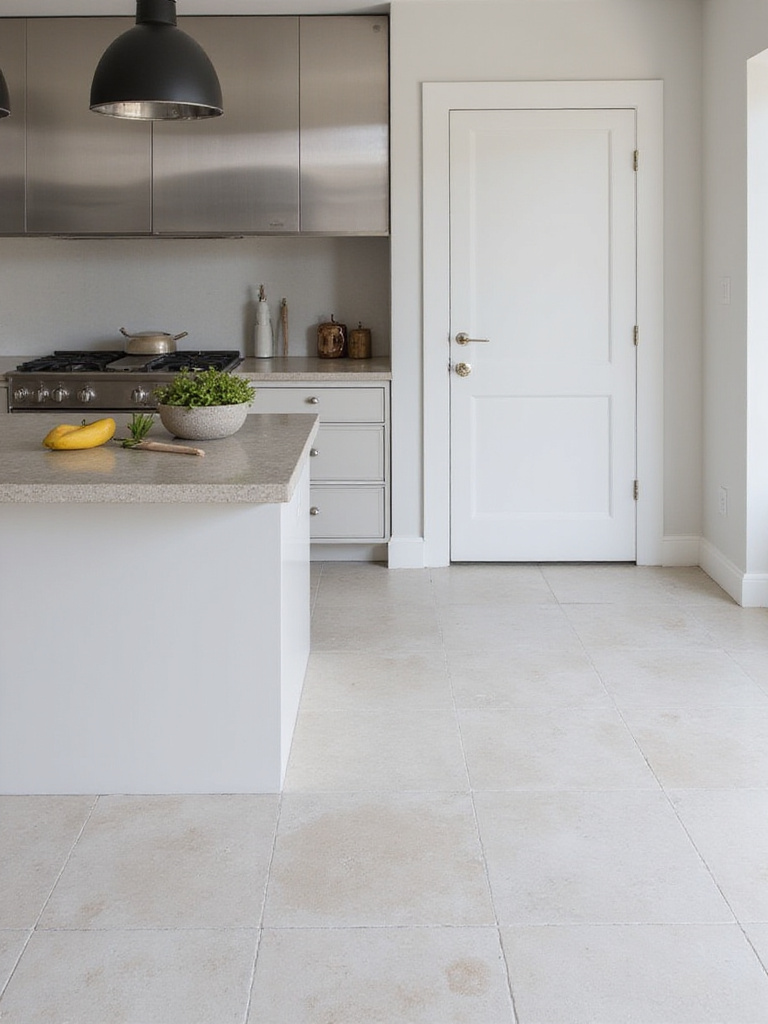
Effective maintenance means having designated homes for every item and the discipline to return things to their proper places immediately after use. Small appliances should live in appliance garages or dedicated storage areas, appearing only when needed. Daily cleaning routines become simpler when surfaces remain clear, allowing you to appreciate the quality materials and clean lines you’ve invested in creating.
The discovery of this maintenance approach often happens when homeowners realize that the calm, organized feeling of their contemporary kitchen positively impacts their overall stress levels and enjoyment of cooking and entertaining.
Conclusion
Creating an authentic contemporary kitchen style requires understanding how each element contributes to an overall sense of calm, sophistication, and functionality. From the foundational choices of handleless cabinetry and large-format materials to the finishing details of geometric accessories and clutter-free maintenance, every decision should support the core principles of clean lines, quality materials, and thoughtful functionality.
The beauty of contemporary design lies in its restraint – achieving maximum impact through careful editing rather than adding more elements. This approach creates kitchens that feel both timeless and thoroughly modern, supporting the way we actually live while providing a serene backdrop for daily activities. The investment in quality materials and thoughtful design pays dividends through years of enjoyment and easier maintenance.
Remember that contemporary kitchen style isn’t about following rigid rules but rather understanding the principles that create spaces where form and function work in perfect harmony. Start with the foundational elements that have the greatest visual impact, then layer in the details that will make your kitchen both beautiful and uniquely suited to your lifestyle.

